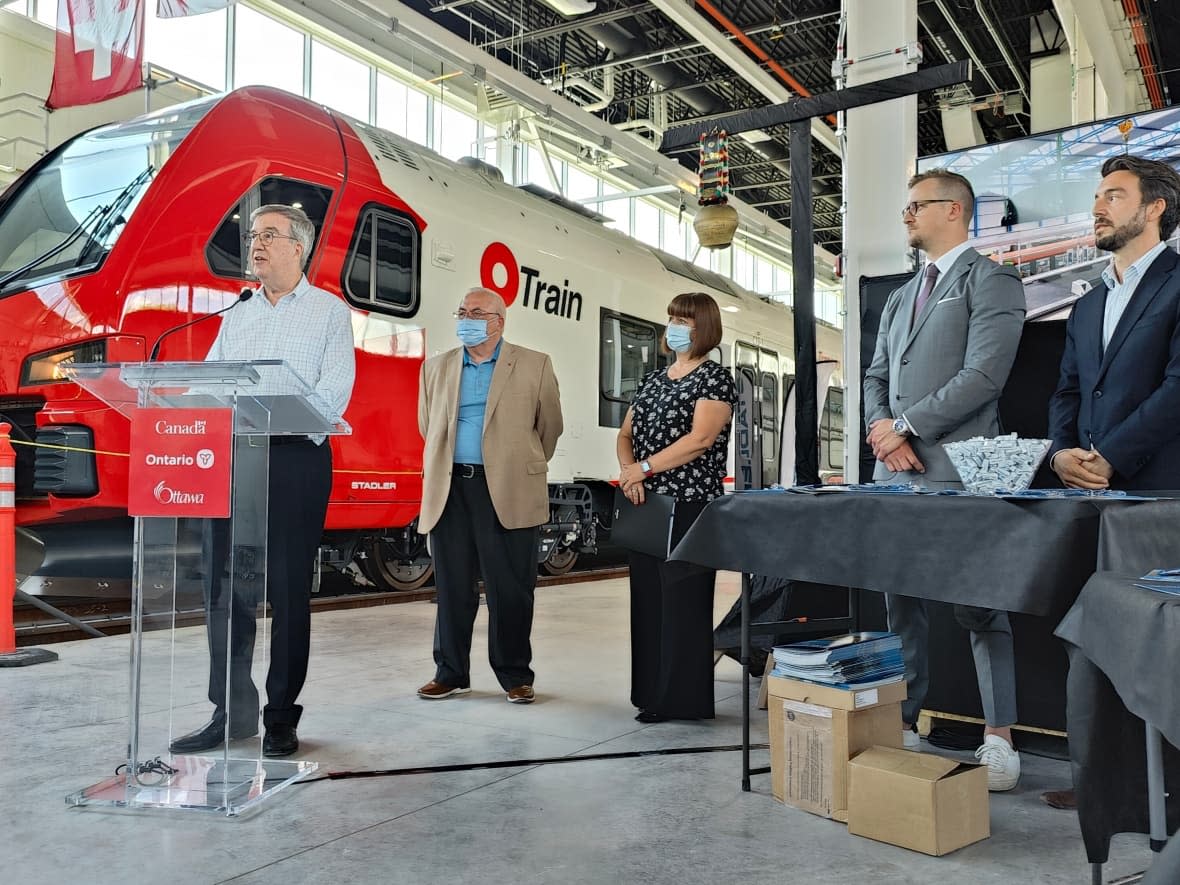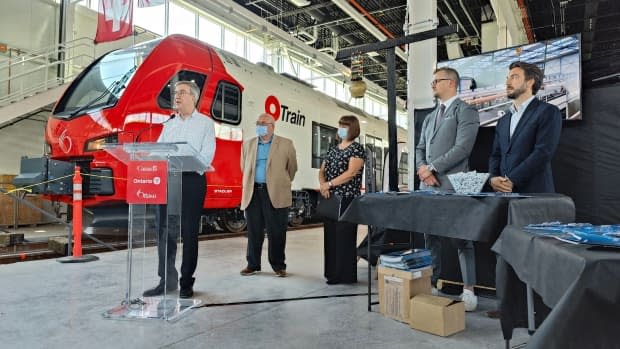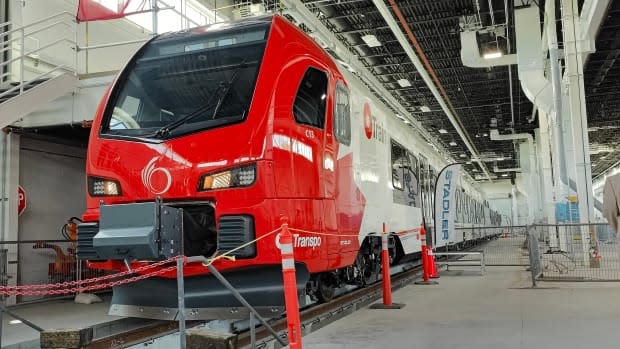5 things to know about the Trillium Line's new Stadler trains

After the last month of hearings at the public inquiry into Ottawa's Confederation Line delivered a number of shocking details, it's nice to have some good rail news: the Swiss-made Stadler FLIRT trains bound for the Trillium Line are in the city, ready to go, in plenty of time for lots of testing.
Mayor Jim Watson, other public and city officials and project workers welcomed the media into the Walkley maintenance and storage facility Friday afternoon to show off one of the seven new trains the city bought for a total of $106 million in 2019 for the north-south expansion.
The Stadlers are not to be confused with the somewhat-troublesome Alstom Citadis Spirit trains — they aren't the same technology, or even the same rail line.
Here are five things you should know about our new trains.
Stadlers have nothing to do with the Confederation Line
When it comes to these trains, forget everything you've heard in the past month — or ever, really — about the Confederation Line light rail system or the electric vehicles that run on it.
The Trillium Line is actually a heavy rail line, and the Stadlers are diesel trains.
Trillium Line Stage 2 — part of the giant $4.66-billion expansion of both rail lines — will cost $1.6 billion (including the trains and a 27-year maintenance contract) and will see the addition of eight new stations. The system, which is supposed to see trains run every 12 minutes, will be extended into the Riverside South community, and include a spur that connects to the airport.
The Trillium Line project is being run by TNext, which is a subsidiary of SNC-Lavalin. There was some controversy around awarding this contract after it was revealed that the company's proposal twice failed to meet the 70 per cent technical score, but that had nothing to do with the trains.

Larger trains, more space
The new Stadlers are decked out in OC Transpo colours — shiny red on the outside, with blue seats inside. But due to the fact these are heavy rail vehicles, they actually feel more like Via Rail or other commuter trains.
They're 80 metres long and seat 200 passengers, but can carry up to 420.
The FLIRT (which stands for Fast Light Innovative Regional Train) is composed of four rail cars, and passengers can walk from one to another through doors that open at the touch of a button.
FLIRTs are diesel, with electric options
While the Stadler FLIRT is a diesel train, it also includes electric components — and could possibly be converted to electric, battery or hydrogen in the future.
Here's how it works.
The trains are propelled forward by traction motors that get electricity to operate from a "power pack," which actually takes up one of the four cars on the train. (This car has no seats.) There are four diesel generators in the power pack that provide the electricity that actually runs the train.
In the future, if the city wanted to stop using diesel altogether, the power pack car could be removed and a pantograph system — like the one used on the Confederation Line — could be installed.
The city could also opt for a battery pack, on which Stadler says its train can run 224 kilometres before requiring recharging. (Germany ordered 44 of these battery pack versions of the FLIRT last year).

And Stadler has a hydrogen version under development as well. The transit authority in San Bernadino, Texas has already ordered one, although the new train isn't expected to be ready until 2024.
The FLIRT is in operation in 21 countries around the world, including places that experience winter, like Norway. The trains in Ottawa even have a plow on the front of them to help with snowy conditions.
Not the only trains on the Trillium Line
The Stadler FLIRTs are going to be used for the main north-south service on the Trillium Line. But the system is also supposed to incorporate the trains that previously ran on the line: six Alstom LINT trains.
If you ever took one of the old north-south O-Trains, you probably rode in one of these. They're about half the size of the Stadlers, and are going to be used on the four-kilometre airport spur that will connect the main line to the two new stations at the Ottawa International Airport.
The airport service is expected to run every 14 minutes.
Lots of time for testing
Unfortunately for many commuters, the revamped Trillium Line is at least a year late. Originally slated to be completed next month, it won't be finished until August 2023 at the earliest. A schedule update is due at city hall in September.
But that extra time will likely be put to good use by the folks testing the trains. There's already about four kilometres of track south of Hunt Club that the FLIRTs are being tested on, although the people running those tests will likely want access to the full system sometime soon.
And the delayed schedule means the trains should be able to experience a full winter before they go into public service.


